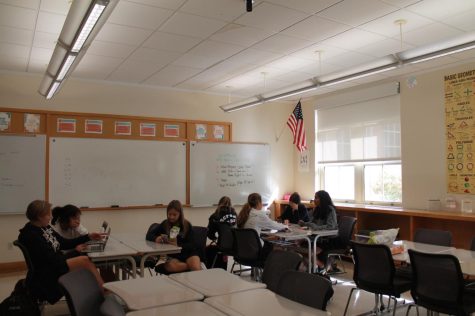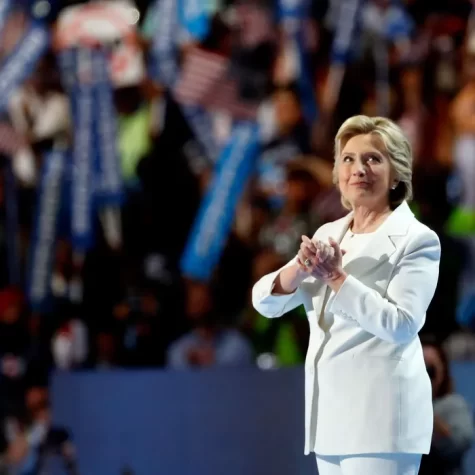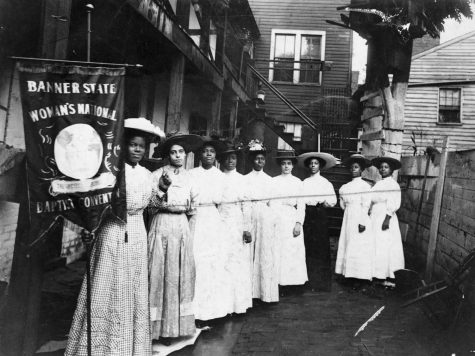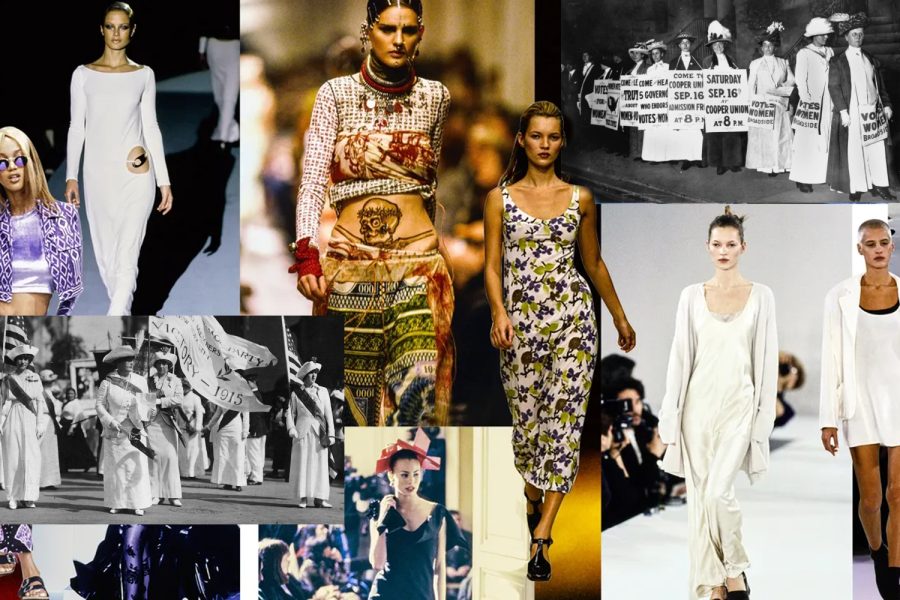The Fashion Club models the value of stylizing identity
The Fashion Club displays an appreciation for the arts by recognizing the manners in which style plays into one’s identity.
As teenagers mature, their closets tend to undergo iterations of fashion styles. From changes in color schemes to experiments with diverse store brands, fashion can play a significant role in forging peoples’ identities. Individuals present themselves by reconstructing their wardrobes and showcasing their unique personalities. In a similar fashion, senior Elsa Latrille introduced the Fashion Club to the Upper School this year. Elsa hopes to educate students on the art of fashion, while encouraging them to take risks and mirror twentieth-century feminist movements.
Art and fashion parallel each other because they both exist as synonymous outlets for expression. A body to a designer is similar to a fresh canvas to an artist. Like a brushstroke, each garment correlates to the artist’s preference, with different outfits conveying certain styles. Individuals become art themselves as their clothing exhibits personality and creativity, according to en.vogue.me.

Fashion can amplify the beauty of the human race by encouraging creativity among individuals. However, society often underestimates the power of style, according to ted.com. In the Fashion Club, Elsa channels her love for the arts by extending her appreciation of the fashion industry to the Upper School community.
“I was inspired to start this club because I am passionate about fashion, dressing up, and appreciating aesthetics and beauty,” Elsa said. “I think it is essential that everyone, especially teenagers, feel like they have the freedom to explore what they like to wear and also for them to feel like they can express themselves and learn more about themselves and the industry.”

Elsa plans to lead discussion-based meetings where students share their thoughts on conflicts in the fashion industry. She looks forward to streaming runway shows and initiating dialogue about the looks presented in the show and their influence on the audience. Elsa strives to open up a conversation about the ethics of the fashion industry and encourages club members to share their opinions.
“Style definitely plays a part in shaping our identities because it allows us to express ourselves and display our moods and emotions through clothing,” Elsa said. “Fashion is an outlet to use color, combine art, and express feelings through what we wear.”
The significance of fashion even seeps into the sartorial choices of world leaders, as they reveal how clothes can replicate the wearer’s attitudes. United States (US) presidential candidate Mrs. Hillary Clinton used the art of fashion to enhance her 2016 campaign, according to nbc.news. As the Democratic presidential nominee, Mrs. Clinton made history as the first woman to secure the backing of a major American political party, according to nbc.news. Mrs. Clinton subverted gender norms by expressing feminist tendencies through her outfit when accepting the Democratic Party’s nomination for the US presidency.
When Mrs. Clinton accepted her presidential nomination, she wore a white pantsuit to pay homage to suffragettes and her generation of mid-century feminists, according to en.vogue.me. When women lobbied for the right to vote in the early 1900s, they used fashion to convey their message.
Suffragettes sought to look presentable to the public, but outdated societal standards meant wearing long, uncomfortable dresses. These garments restricted physical mobility, highlighting conventional ideas regarding femininity and a woman’s place in society, according to crfashionbook.com. The suffragettes dressed in all white to further their mission, rebelling through fashion. While questioning the status quo, the suffragettes suffered criticism for appearing overly intimidating and manly.

Aligning with Mrs. Clinton’s sentiment, female representatives in Congress chose to wear white at the 2019 and 2020 State of the Union Addresses, according to en.vogue.me. These representatives and the presidential candidate made historical strides in politics by recognizing the efforts of twentieth-century women’s rights movement leaders.
Elsa explains that the public tends to overlook the value of fashion as people often misinterpret the art. As students at an all-girls school, Elsa highlighted the necessity of uniting women through fashion.
“I started the Fashion Club because I felt there was definitely a space that needed to be filled in terms of education on the fashion industry and opportunities for women,” Elsa said. “Especially as an all-girls school, knowledge about fashion is definitely vital because it is the first thing people see, so by utilizing a sense of style, people can perceive us the way we want to be perceived.”
Elsa believes that fashion is especially essential for teenagers. She discussed how, as children mature, they tend to change styles more frequently, discovering themselves through self-expression.
“The industry can be underrepresented in the face of other fields, so I think it would be great for students to immerse themselves in an artistic field,” Elsa said.
Featured Image by Ana Patricio ’24

Ana is immensely grateful to serve as this year’s Co-Editor-in-Chief and Social Media Manager. Approaching her third year at the King Street Chronicle,...



Jill Patricio • Oct 19, 2022 at 9:37 pm
I loved this article, I learned a lot !